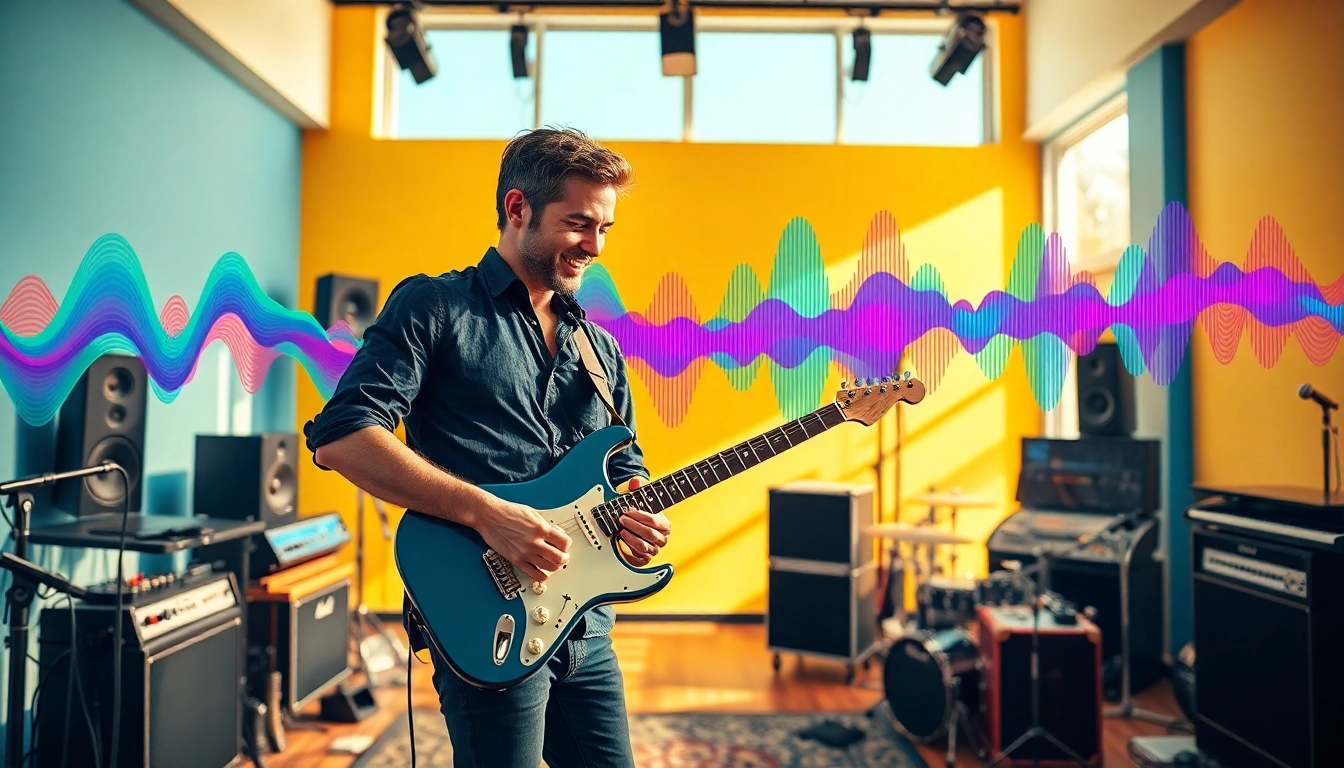Strategies for Achieving Streaming Success in Today’s Music Industry
Understanding Streaming Success
Defining Streaming Success in the Digital Age
In the evolving landscape of music consumption, Streaming Success is no longer just a metric of plays or downloads; it embodies a combination of engagement, fan base growth, and how well artists leverage digital platforms to connect with their audiences. Success in this digital age can be defined through various lenses: reaching audiences effectively, maintaining a loyal fan base, and generating revenue efficiently. Streaming platforms, such as Spotify, Apple Music, and YouTube, have become central to achieving this multifaceted success.
Importance of Streaming Platforms for Musicians
Streaming platforms are vital for musicians seeking to broaden their reach and build a sustainable career. With the decline of physical album sales and the rise of digital music consumption, these platforms provide a global stage where artists can showcase their work. Artists can trap an audience easily and develop a continuous revenue stream through streamed content. Furthermore, streaming services are beneficial in audience targeting, enabling musicians to engage directly with listeners who resonate with their genre or style.
Statistics on Music Consumption Trends
According to recent surveys, over 80% of music listeners regularly use streaming services. The data reveals that consumers are shifting towards playlists, with curated collections proving to be significant in driving listener habits. With statistics showing that playlists can substantially increase exposure—sometimes equating to millions of streams—understanding these consumption trends is key for artists aiming for streaming success. Likewise, demographics indicate that millennials and Gen Z are the largest user bases for these platforms, reflecting changing listener preferences and marketing strategies.
Building an Engaging Musical Brand
Identifying Your Unique Sound and Style
Creating a successful music career begins with defining one’s unique sound and style. Artists must go through a self-discovery process that includes understanding their influences, strengths, and artistic vision. This moment of reflection helps in crafting music that authenticates their identity, thereby carving a niche in a crowded market. For example, artists like Billie Eilish have left indelible marks by producing unique soundscapes that drew attention and generated massive followings. To establish a compelling sound, musicians should experiment with various genres, collaborate cross-genre, and constantly seek feedback from trusted sources.
Leveraging Social Media for Brand Promotion
In a digitally driven music industry, social media serves as a critical tool for artists’ branding efforts. Platforms such as Instagram, TikTok, and Twitter offer musicians the ability to engage with their audience in real time, provide insights into their creative process, and promote new releases. By creating relatable and entertaining content, artists can build a solid fanbase, amplify their visibility, and humanize their brand. Notably, trends have shown that authentic interactions, behind-the-scenes footage, and challenges encourage followers’ participation, further establishing an immersive brand experience.
Creating Memorable Visual Content
Visual elements are essential in the music industry, enhancing how artists express their identities and music. Creative and polished music videos, engaging cover art, and visually appealing posts can make a significant impact on audience retention and perception. Artists must invest in high-quality visual content that not only captures the essence of their music but also resonates with the audience. Case studies show that musicians who visualize their art effectively often see remarkable engagement rates across all platforms. Additionally, utilizing eye-catching thumbnails and vibrant visuals can improve click-through rates on music platforms.
Optimizing Your Music for Streaming
The Role of Metadata in Streaming Success
Metadata is crucial in improving the chances of visibility and proper categorization on streaming platforms. Properly labeled tracks with accurate information related to the artist, genre, contributors, and release date can greatly enhance streaming success. Metadata helps platforms like Spotify and Apple Music deliver tailored recommendations to listeners, directly affecting how often an artist’s music is suggested. Artists need to ensure their metadata is clean, comprehensive, and properly integrated, as the right tags can lead to increased engagement and a broader audience reach.
Best Practices for Music Release Strategies
Successful music release strategies involve a well-thought-out plan encompassing timing, promotions, and audience engagement. With most platforms favoring consistency in release schedules, musicians should develop a calendar for single drops, EPs, or albums. Pre-release promotions help build anticipation, while post-launch strategies might involve leveraging playlists to maintain momentum. Collaborative releases with other artists can also increase exposure; by tapping into each other’s fan bases, all parties can benefit from greater visibility. It’s also wise to mix traditional and digital marketing strategies to cover a broader audience spectrum.
Collaborating with Other Artists
Collaboration is an effective means of broadening an artist’s reach within the streaming space. Partnering with artists from similar or even different genres adds fresh perspectives to music and exposes both artists to new audiences. Successful collaborations can regenerate interest in both artists’ catalogs, as well as spark organic conversations among fans. Providing distinct elements of their style while remaining aligned with their brand can yield great long-term benefits, as shown in the collaborations of artists like Travis Scott and Kendrick Lamar.
Marketing Strategies for Increased Visibility
Utilizing Influencer Partnerships
Influencer marketing has emerged as a powerful tool for musicians aiming to gain visibility in crowded streaming markets. By partnering with influencers who have active audiences that align with their target listeners, artists can effectively reach new potential fans. This strategy not only improves visibility but also adds social proof, increasing trust in the artist’s brand. When influencers create authentic content featuring an artist’s music—such as Instagram stories, TikTok videos, or live-streaming sessions—it can drive significant interaction and streaming numbers.
Running Effective Advertising Campaigns
Paid advertisement campaigns are vital for extending an artist’s reach and driving streaming success. Platforms like Facebook, Instagram, and Spotify offer robust advertising options targeting specific demographics, ensuring that promotional content reaches the right audience. Artists should experiment with different ad formats—be it video teasers, audio snippets, or links to streaming platforms—to identify what resonates best with their audience. Moreover, utilizing data analytics allows for continuous refining of ads to maximize performance and optimize return on investment.
Engaging with Your Audience through Live Performances
Live performances—either virtually or in-person—play a pivotal role in building a musician’s brand and connecting with fans. These performances are a powerful opportunity to showcase new music, generate excitement, and encourage streaming clicks. Interacting with the audience creates a two-way relationship, fostering community and loyalty. Artists should look to creatively engage their audience through Q&A sessions, fan contests, and unique setlists that encourage sharing and interactions beyond our shows.
Measuring Your Streaming Success
Key Performance Indicators for Musicians
To evaluate streaming success accurately, artists must familiarize themselves with key performance indicators (KPIs). KPIs such as total streams, number of playlists added, follower growth, and listener demographics provide concrete insights about the music’s performance. Moreover, understanding engagement rates, such as skips, saves, and shares, can highlight a track’s resonance with listeners. By closely monitoring these metrics, musicians can identify successful strategies and areas requiring improvement, enabling more informed decisions moving forward.
Analyzing Streaming Data for Continuous Improvement
Analyzing streaming data encompasses reviewing not just the numeric outcomes but also understanding listener demographics and their preferences. Artists should utilize available analytics tools on streaming platforms to track performance over time. Identifying trends in this data can reveal what resonates with the audience, whether it’s specific genres, tempos, or themes. Success lies not only in artists producing great music but also in their capacity to adapt based on insights gained from streaming behaviors.
Adjusting Strategies Based on Audience Feedback
Listening to audience feedback is a pivotal element of ongoing success. Whether it’s critiques on social media or insights from shows and live streams, artists should remain receptive to what their audience is expressing. Surveys, direct messages, and social media interactions can provide invaluable first-hand feedback that can inform music production, marketing strategies, and branding. The capacity to pivot and adjust based on this feedback is crucial for sustaining long-term engagement and growth in the highly competitive streaming landscape.














Post Comment